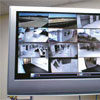The Security Industry Association has submitted comments in support of a proposed Department of Energy (DOE) rule that will codify one of the organization’s legislative victories.
Several months ago, I noticed a set of tire tracks running across my front lawn. Knowing that neither my wife nor I enjoy offroading on our yard, I did some investigative work.
- By John L. Moss
- Jun 04, 2012
This year, ASIS International (ASIS) is celebrating the 35th anniversary of its security certification program.

How does one of the largest railway companies in the world protect its passengers from terrorist attacks and sabotage?

The Nebraska Medical Center is the largest healthcare facility in the state, with 624 licensed beds. Administrators wanted to improve the safety of the facility’s at-risk patients who require 24/7 observation, while also reducing staff and overhead requirements.
- By Courtney Pedersen
- Jun 04, 2012
Even though the first product launch of a network camera happened in 1996, it was a little more than a decade ago before the device began appearing in the physical security arena.
- By Fredrik Nilsson
- Jun 04, 2012

At the behavioral health hospitals, risk management and staff training programs play an important role in the overall vision of their parent corporation by creating a safe and effective environment for patients, employees, visitors and the general public.
- By Nicole Segura, Vance Kozik
- Jun 01, 2012

Many of today’s growth-oriented businesses aim to extend operations to other states and countries after solidifying success in existing markets, and this trend will only continue to accelerate.
- By Renae Leary
- Jun 01, 2012

When your physical access control system (PACS) manufacturer tells you its system supports PIV-I “end-to-end,” you might want to do some additional digging to make sure you both agree as to what that really means.
- By Bob Fontana
- Jun 01, 2012

Today’s video surveillance camera manufacturers offer models specifically built for the healthcare setting.
- By Greg Peratt
- Jun 01, 2012